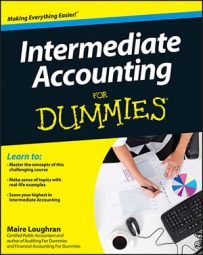If a company swaps stock for property, plant, and equipment (PP&E), you can’t just use the par value (arbitrary value listing on the face of the stock certificate) of the stock as the cash-equivalent exchange rate for the PP&E. Par most likely doesn’t reflect the market value of the stock.
If the stock trades on an open marketplace such as the New York Stock Exchange, using the trading value of the stock as the cash equivalent is probably a safe bet. For example, say that Joe’s Cookie Cutters, Inc., is a publicly traded company with actively traded common stock valued at $25 a share.
As Joe’s anticipates expanding operations due to its spanking new cookie-cutter machine, it buys the plot of land adjacent to the existing factory. After a meeting of the minds with the owner of the land, Joe’s swaps 4,000 shares of no-par common stock for the land. The resulting journal entry is to debit land for $100,000 and credit common stock for $100,000.
If Joe’s stock is not actively traded on an open marketplace, use the fair market value of the land, which is $80,000, as the cash equivalent. The resulting journal entry is to debit land for $80,000 and credit common stock for $80,000. Joe’s issues 3,200 ($80,000 / $25) shares of stock to the owner of the land.
This example ignores stock with a par value. If the stock has a par value, the calculation must account for additional paid-in capital, which is the excess of what shareholders pay to buy stock over the stock’s par value.

